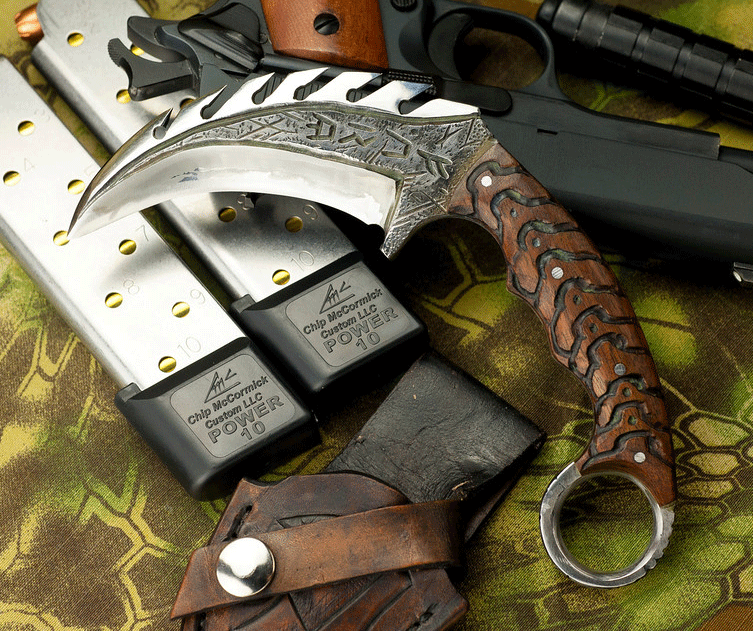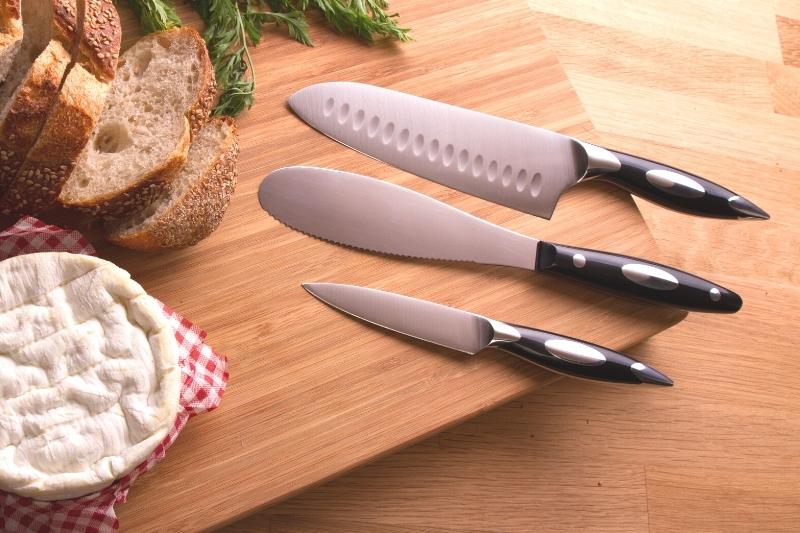Curved blades have been essential in many industries and culinary arts for generations. These curved blades give precision, control, and versatility.
Understand what a curved knife is and how it can improve your experience if you’re a chef, outdoorsman, or craftsman. This guide covers curved knives’ design, usage, maintenance, and more.
What is a Curved Knife?
Curved knives are blades with a slight bend. Its unique shape gives it various advantages over straight-edged blades. The curve improves slicing and rocking motions for precise cuts and blade control. Chefs, woodworkers, leatherworkers, and surgeons employ curved knives.
The Anatomy of a Curved Knife

Let’s study a curved knife’s anatomy:
Handle: The handle gives a pleasant grip and controls the knife.
Bolster: Between the handle and the blade, the bolster stabilises the knife.
Tang: The blade extends into the handle, strengthening the knife.
Spine: The blade’s spine provides rigidity and stability.
Edge: The blade edge cuts and slices.
Curvature: The knife’s form determines its cutting method.
Curved Knives Versatility

Culinary Uses
Culinary precision and efficiency make curved knives ideal. Chefs use these superb blades:
flesh Carving: The curved blade glides easily along flesh curves, allowing cooks to carve precisely.
Vegetable Preparation: Curved knives provide you control when mincing herbs, julienning vegetables, or making elaborate garnishes.
Fish filleting: A curved knife is best for cutting around bones and making clean cuts.
Bread Slicing: The gently rocking motion of the curved blade helps bakers slice crusty bread evenly.
Other Applications

Curved knives have several uses outside of cooking:
Woodworking: Curved knives give woodworkers precision and control.
Leatherworking: A curved knife cuts leather smoothly and accurately, improving quality and precision.
Surgical Procedures: Curved blades let surgeons navigate delicate tissues and structures, reducing harm.
Maintaining and Caring for Curved Knives

Curved knives must be maintained to work well. Follow these tips to maintain your curved knife:
Handwashing: Handwash your curved knife with mild soap and warm water. Abrasives and aggressive detergents might harm the blade.
Drying: To avoid rust and corrosion, dry the knife with a soft cloth after washing.
Storage: Keep your curved knife in a block or sheath to prevent damage.
Sharpening: Sharpen your curved knife regularly with a sharpening stone or honing rod. Sharpening improves cutting.
Questions (FAQs)
Curved kitchen knives have what advantages?
Curved knives improve kitchen control, precision, and efficiency. The curved blade makes chopping, mincing, and slicing easy and precise.
Can lefties and righties use curved knives?
Curved knives are ambidextrous for lefties and righties. Regardless of hand dominance, the ergonomic design provides a comfortable grip and optimal control.
Curved knives: beginner-friendly?
Beginners can use curved knives with good cutting techniques and prudence. Starting with simpler chores can help you become used to the knife’s quirks.
Curved knife sharpening: how often?
Use determines sharpening frequency. When cutting performance decreases, sharpen a curved knife every several months.
Curved knives for camping and survival?
Absolutely! Outdoor curved knives are multipurpose. Camping, survival, and bushcraft are suitable for their versatility in cutting.
Curved knives have varied curves?
Curved knives have modest to strong curvature. User desire and use determine the curve.
Conclusion
Curved knife? Its beautiful blade combines precision, control, and versatility. Curved knives have been useful in cooking, crafting, and more.
Understanding its anatomy, usage, and upkeep may unlock the power of a curved knife and improve your skills. Enjoy the curvature and the blades’ beauty!
